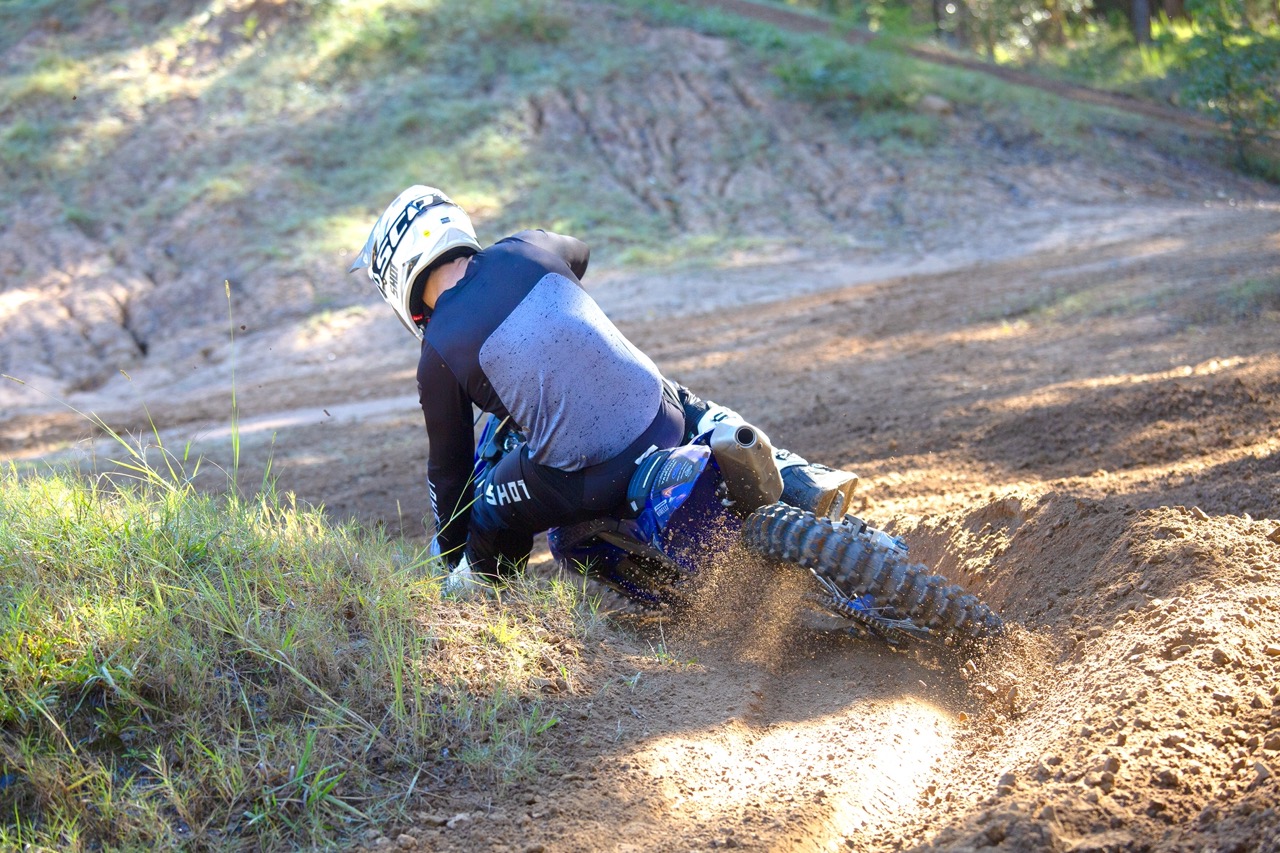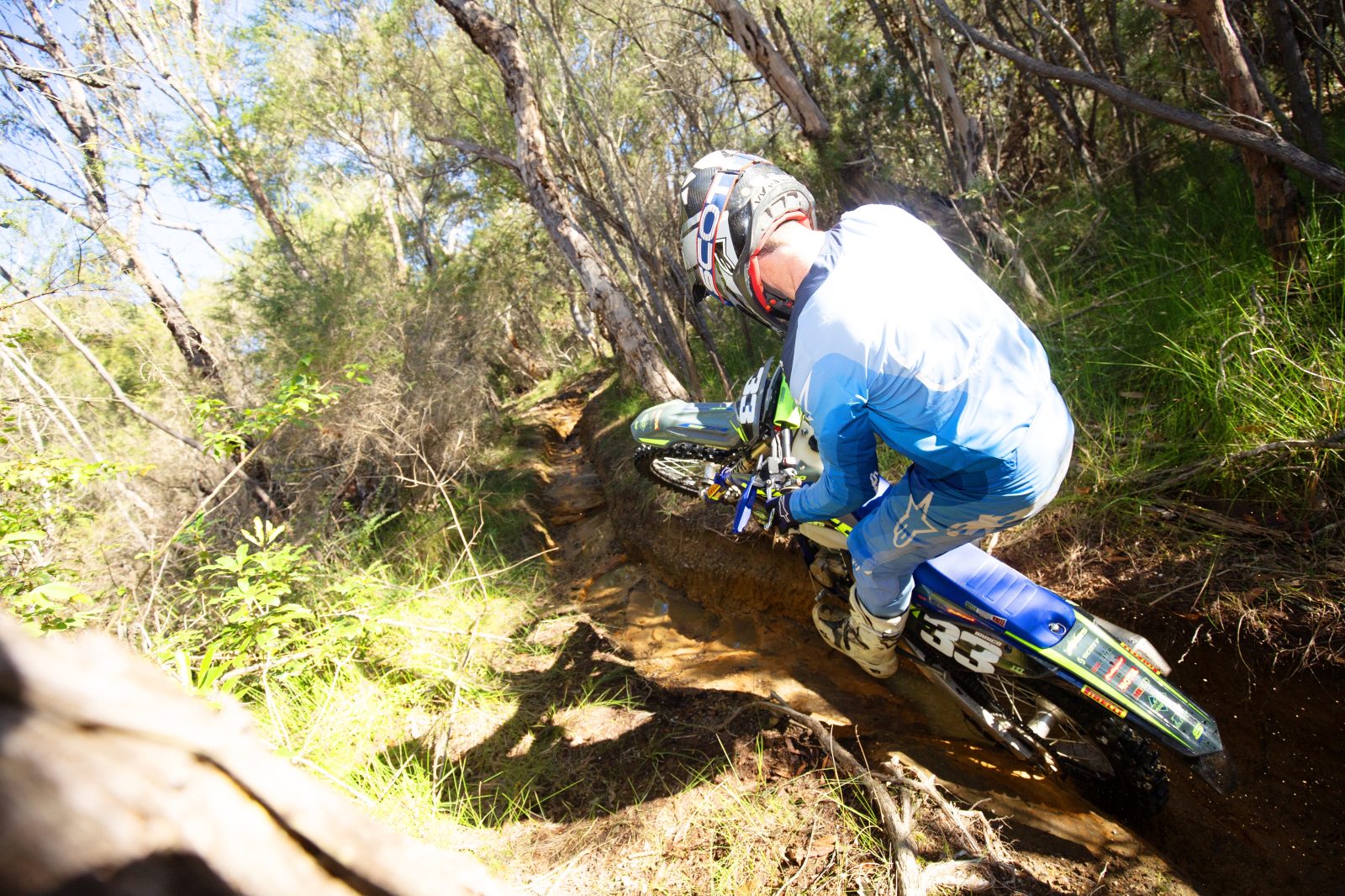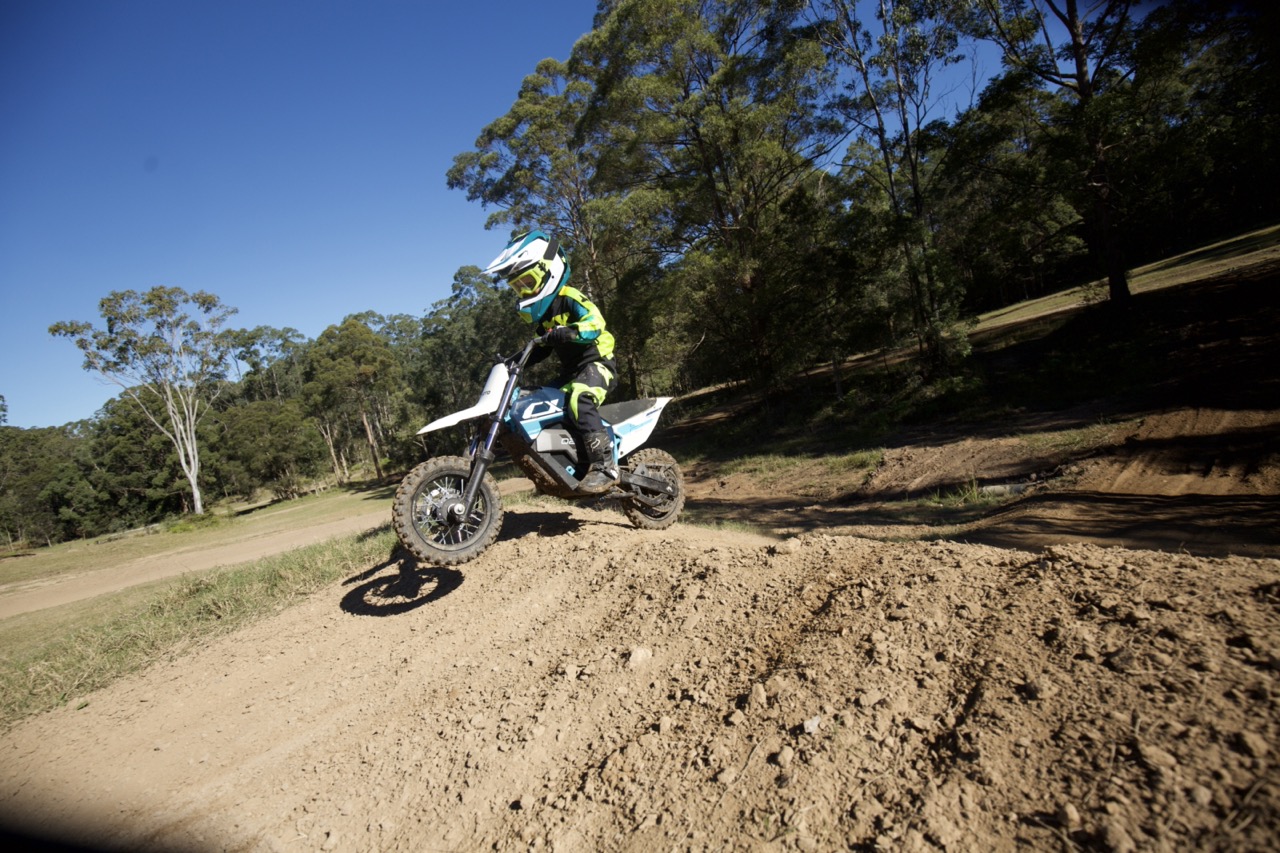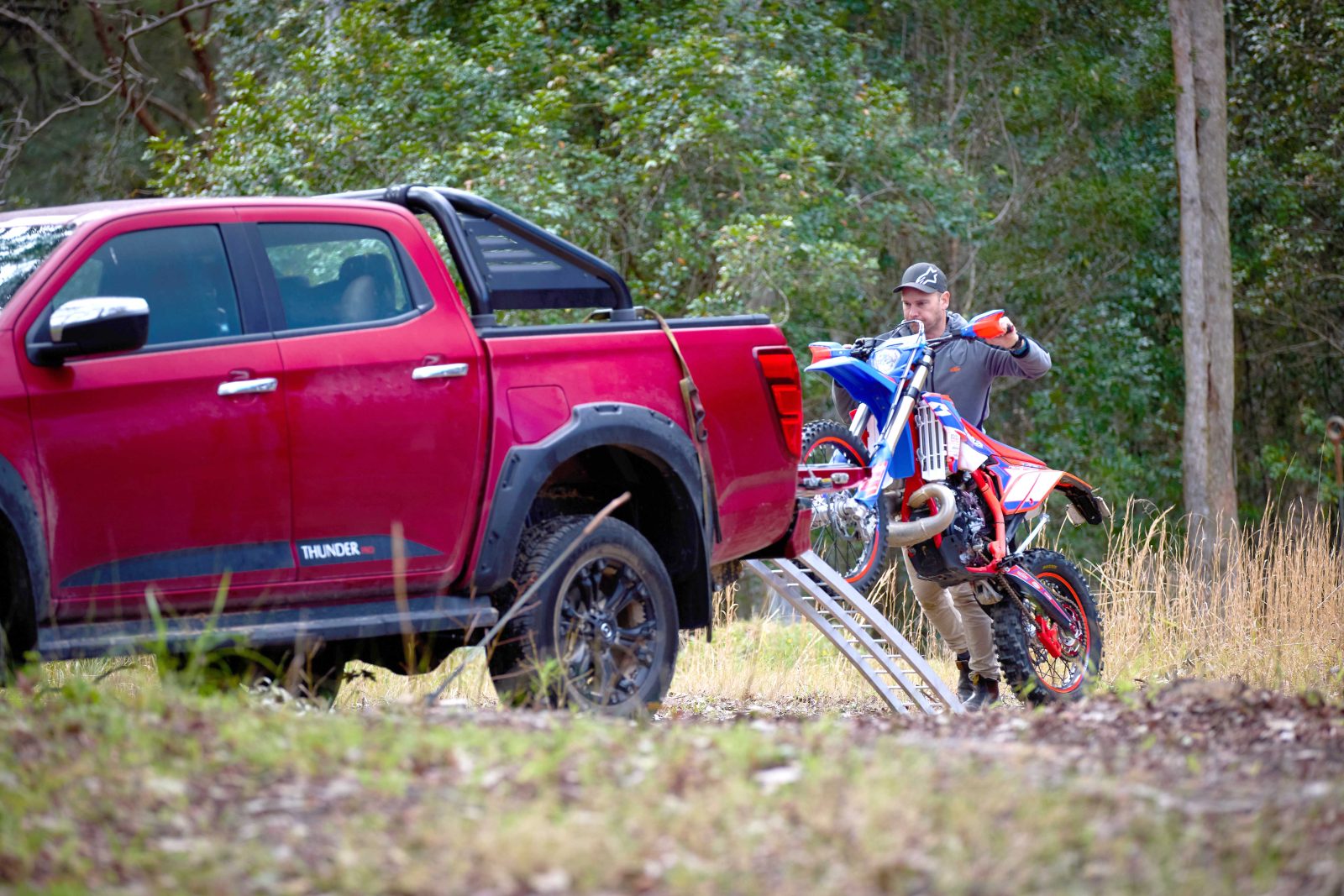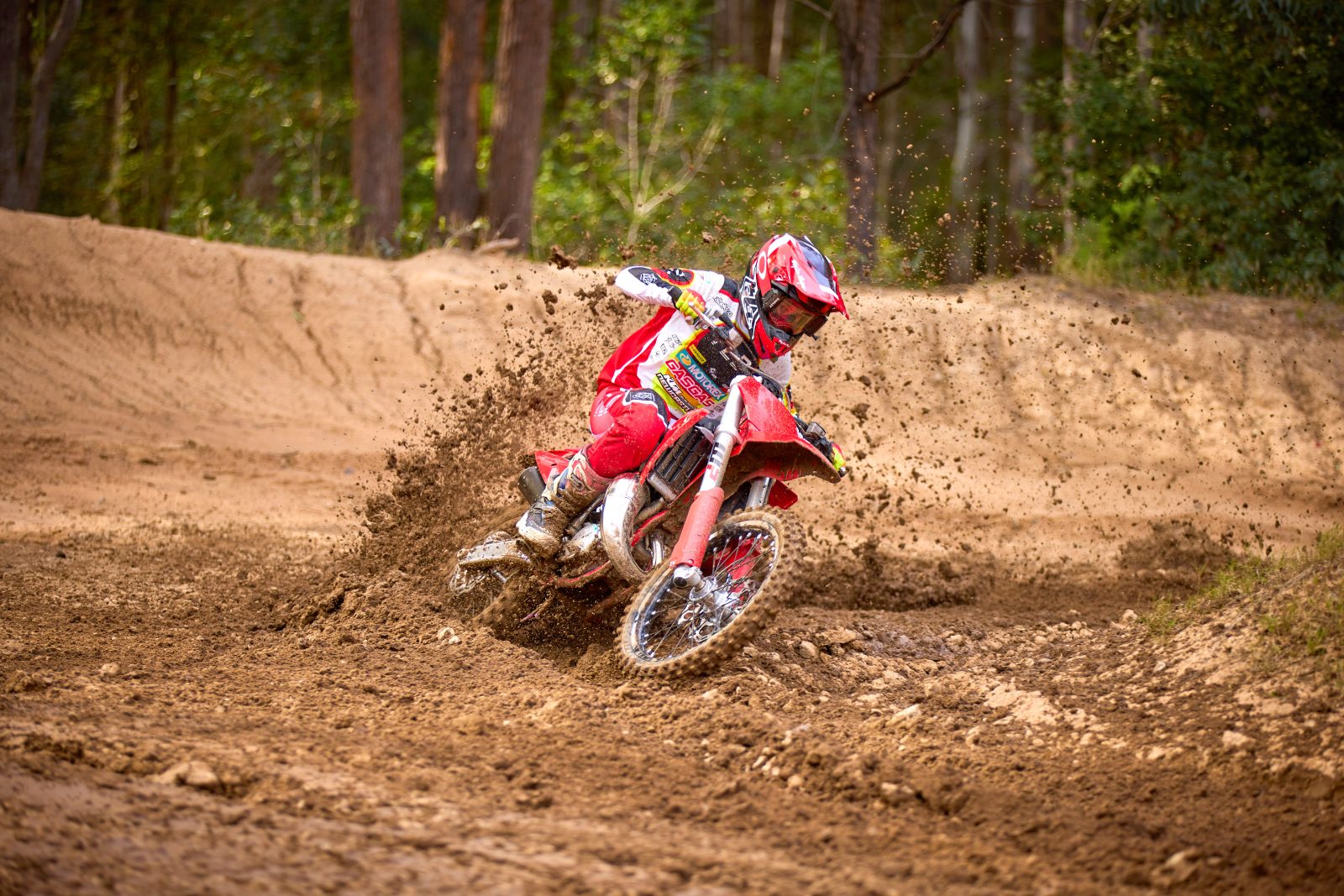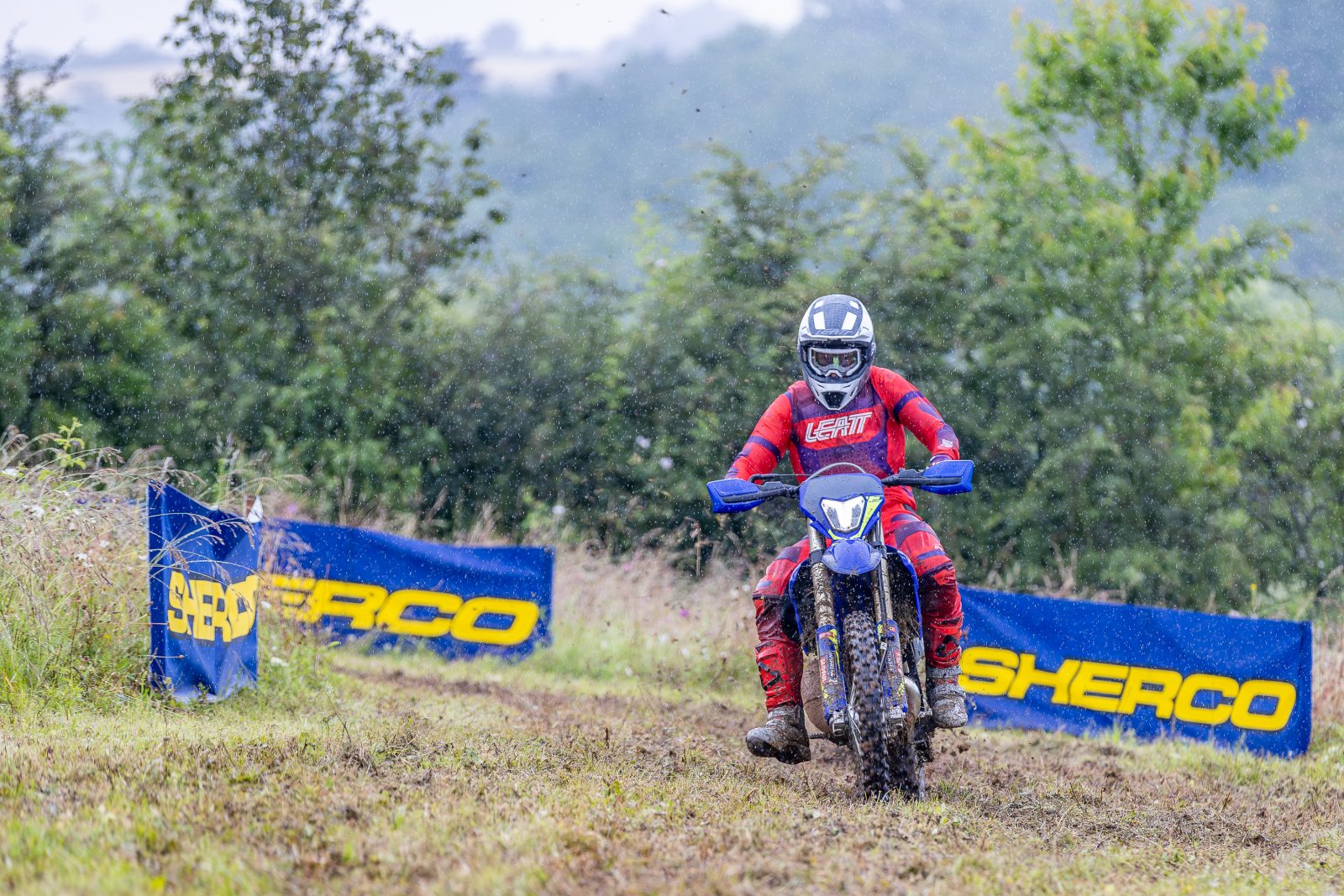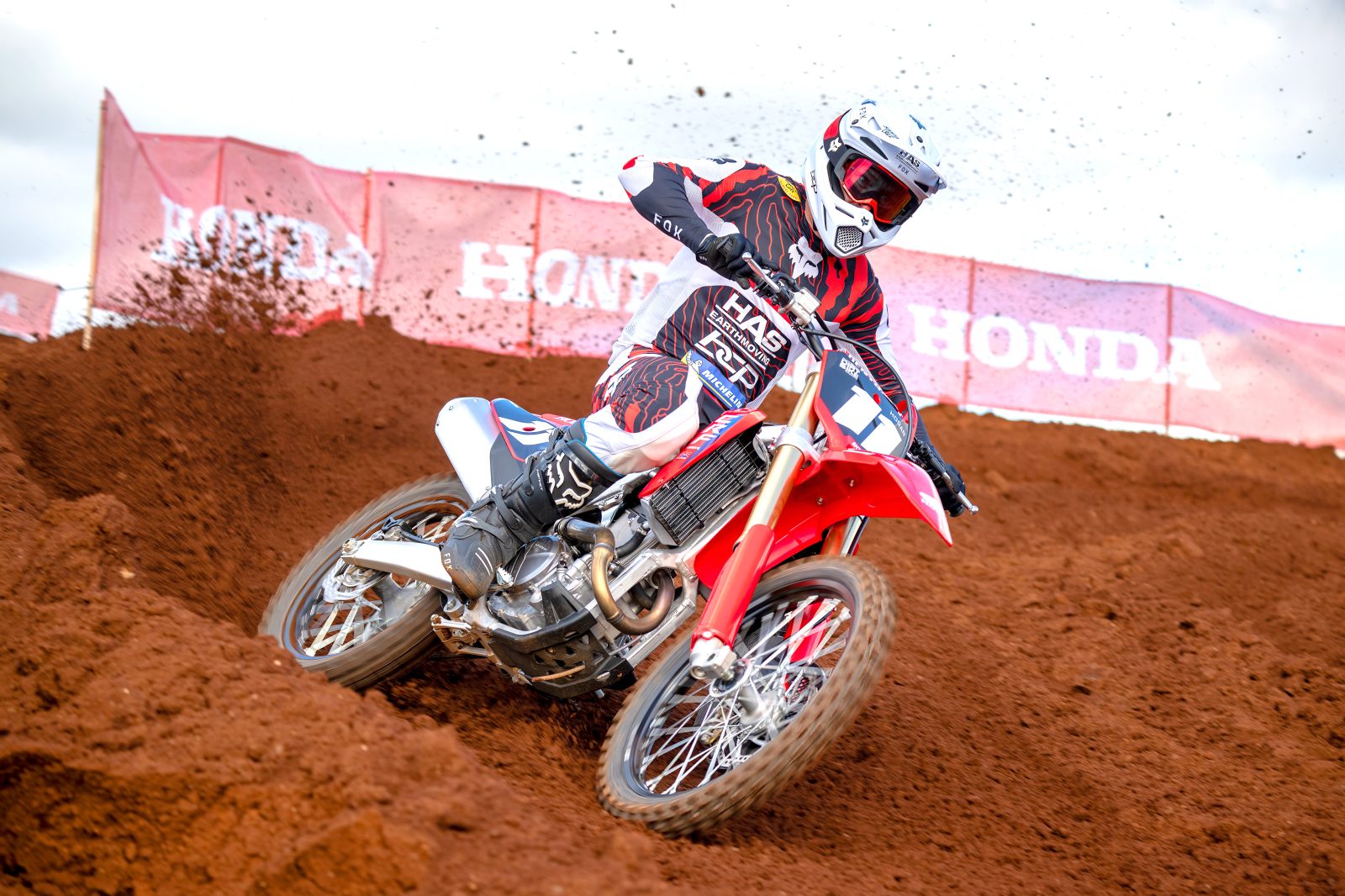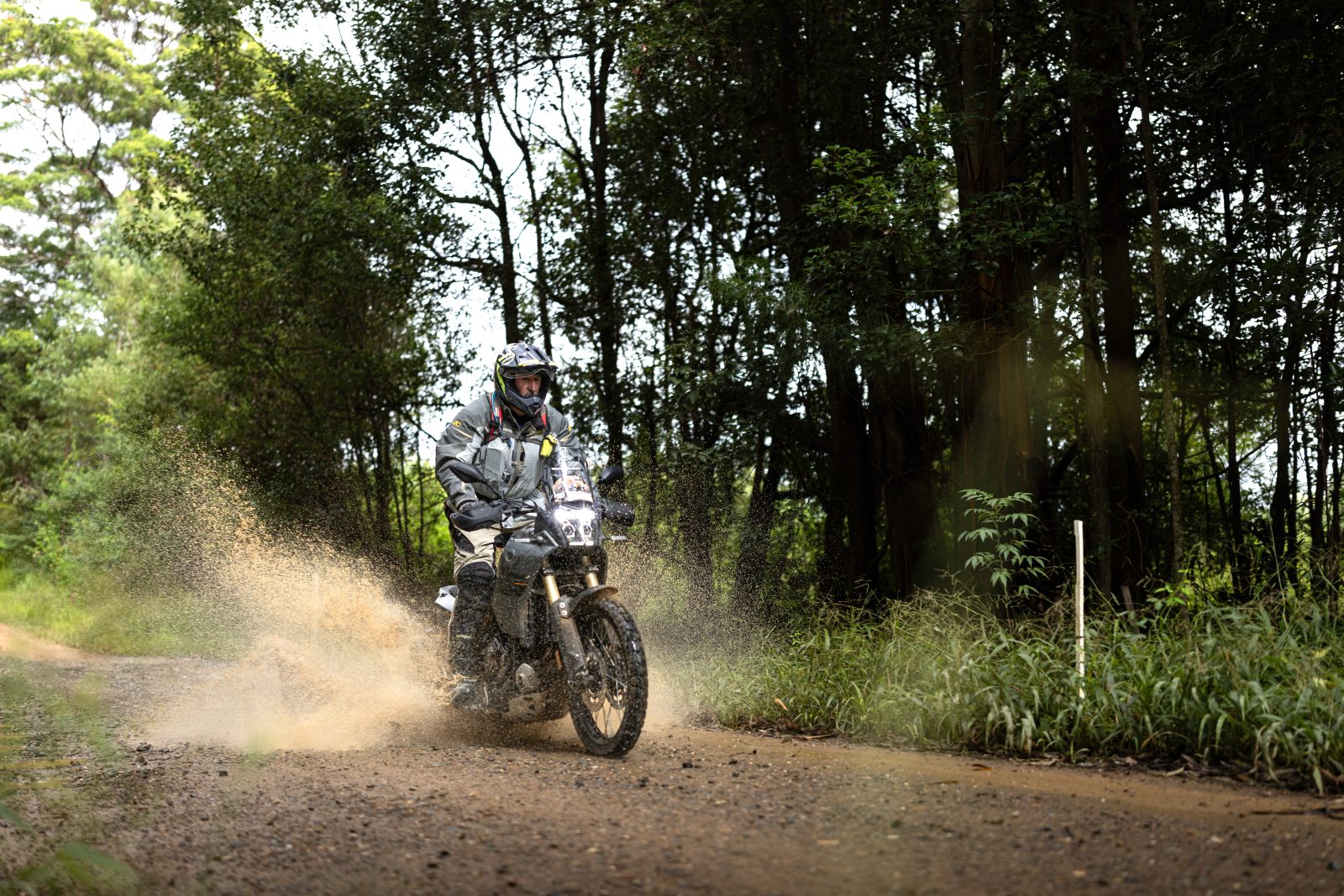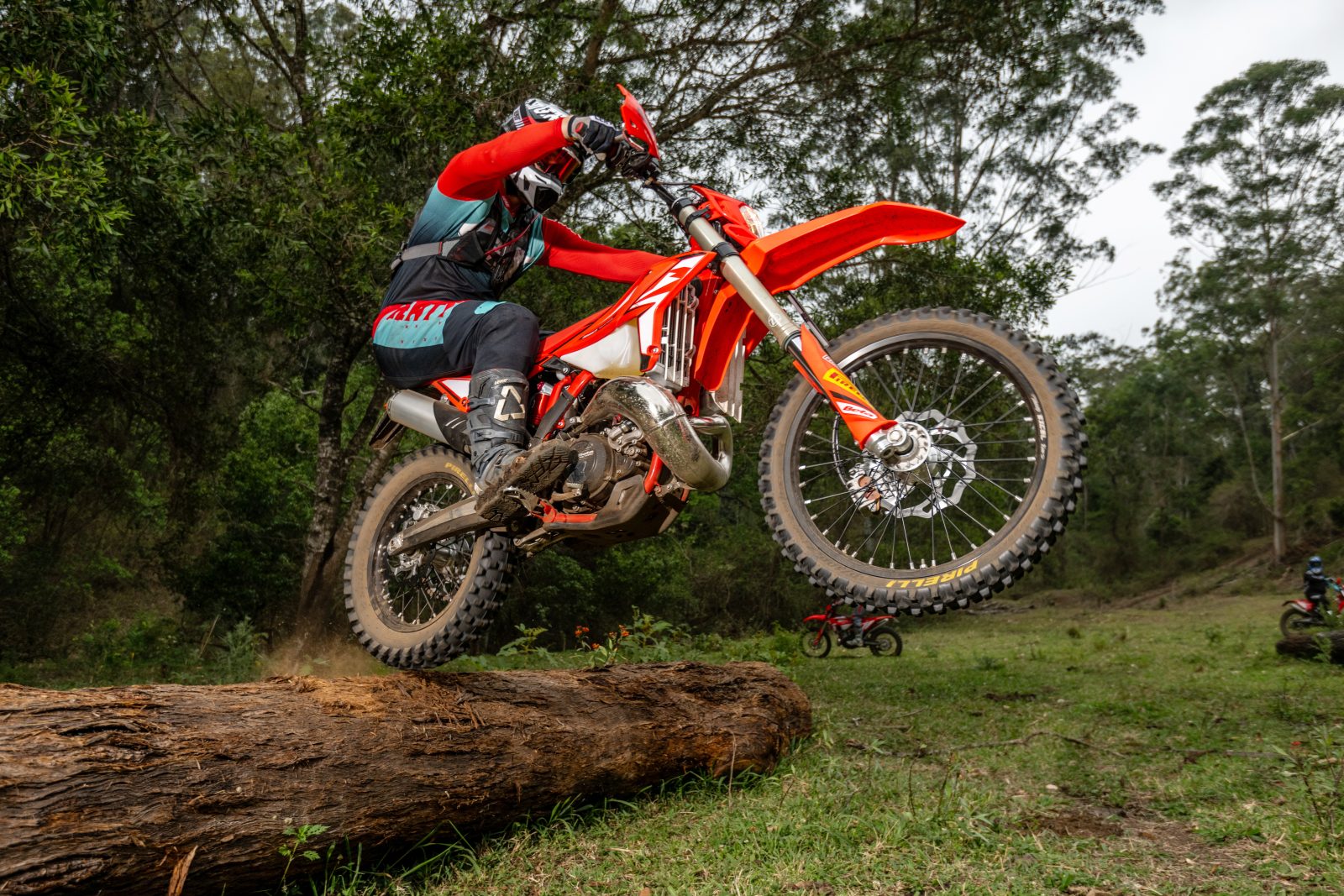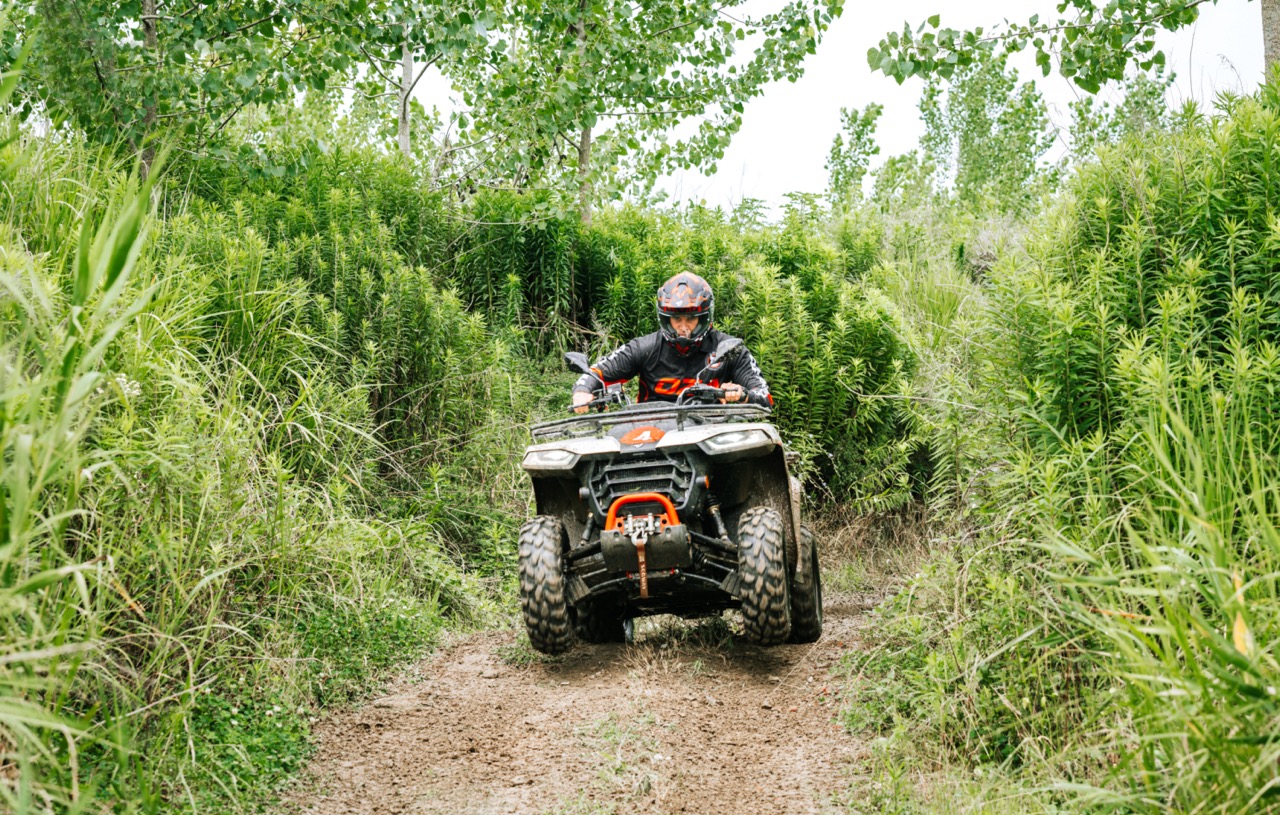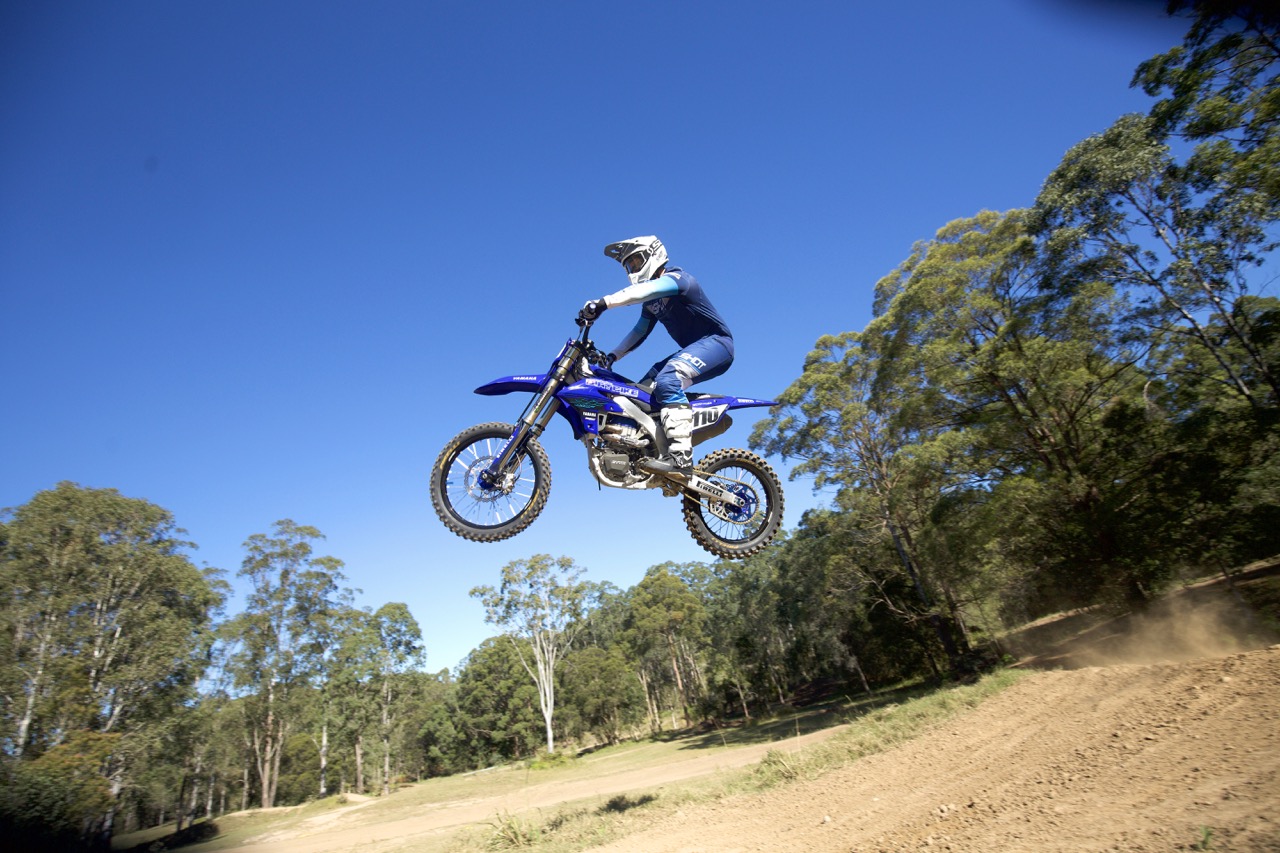One of the standout characteristics of the 2024 Beta RR 250 is its exceptional agility. Weighing in at a dry weight of 103.5 kg, with a nearly perfect distribution between the front (50.8 kg) and rear (52.7 kg), this bike is designed for riders who want agility on the trails. The lightweight frame, constructed from molybdenum steel with a double cradle split above the exhaust port, contributes significantly to its nimbleness. This design ensures the bike remains stable and responsive, even in the most technical terrain. As all steel frames do, it flexes where it should without feeling rigid or top-heavy.
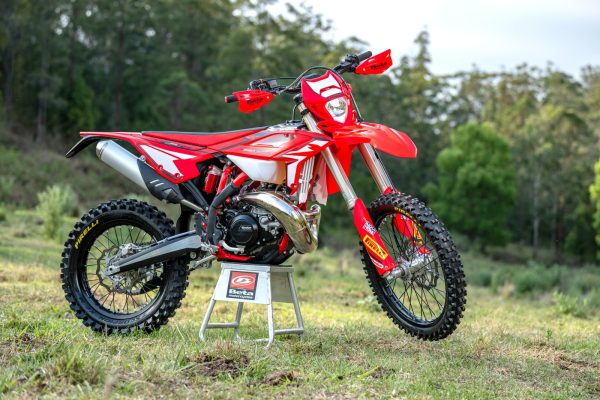
The 1482 mm wheelbase strikes an ideal balance between stability and manoeuvrability. It’s short enough to weave through tight trees and tackle switchbacks with ease, yet long enough to provide the necessary stability for high-speed sections. When combined with a 950mm seat height the bike is perfect for anyone over 165cm. While some may find the seat height a bit taller than other models like the XTrainer (see issue #541), particularly in challenging off-camber sections, the narrow profile of the bike compensates, allowing for easy body movement and quick adjustments during hard enduro riding.
It has 320mm of ground clearance which provides enough space to navigate rocky trails without the risk of bottoming out.
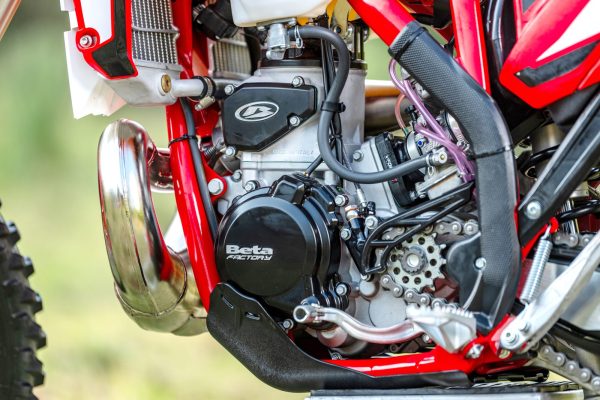
HEART FOR RACING
The heart of the 2024 Beta RR 250 is its 249 cc single-cylinder, two-stroke engine. This engine is not just about raw power; it’s about delivering a responsive and easy-to-use power curve. However, unlike the 300cc models that offer more torque at lower RPMs, the RR 250 requires more rider involvement. Riders will find themselves revving the engine higher and making more frequent gear changes, especially when tackling fast trails. This characteristic might be a downside for those who prefer a more relaxed ride.
For riders under 90 kg, the RR 250’s power and torque are more than sufficient for most trail conditions. The bike delivers ample grunt to power through climbs and tackle tricky sections without the need for the additional displacement found in the RR 300. This makes the RR 250 an ideal choice for riders who want a balance of power and control without the added weight, bulk and inertia of a larger engine.

SUSPENSION FOR CRUISING
The suspension setup on the 2024 Beta RR 250 is designed for trail riding and riders not much heavier than 90kg with gear on. Up front, the bike is equipped with a 48mm ZF fork that is great at taking on small choppy stuff however, one area where the suspension shows its limitations is under heavy braking, particularly on downhill sections. The front fork tends to dive slightly, which can cause the bike to feel a bit unstable. This is followed by a slight deflection, which might require the rider to adjust their braking technique or go with a firmer suspension setting. At the rear, the ZF shock is fantastic.
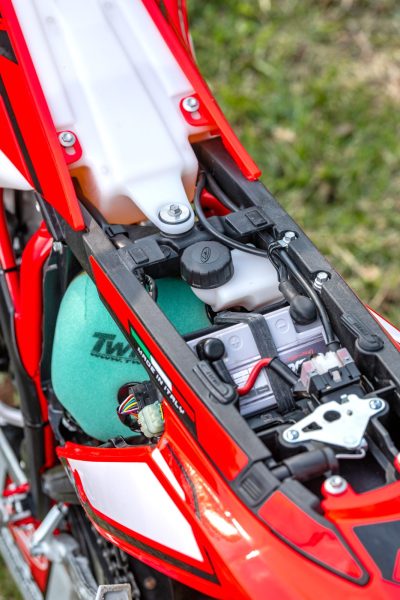
THE BITS AND PIECES
The 2024 RR 250 is equipped with a 260mm disc with Nissin hydraulics up front and while powerful and effective, it lacks that super-smooth progression and can be a little bit too grabby. It engages quickly and with considerable force, which caught me off guard a few times, particularly in slippery or loose conditions. On the positive side, the brakes are far less spongy than previous iterations, providing a more direct and responsive feel.
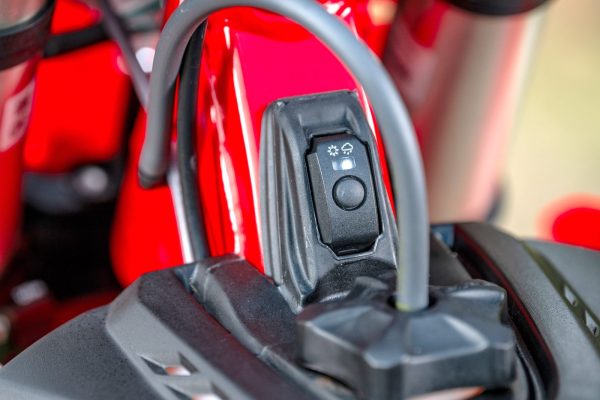
TREASURE MAP
One of the best features about the RR range of Betas is the dual map system, which includes Rain and Sun modes. These modes significantly alter the bike’s power delivery, making it adaptable to a wide range of conditions.
The Rain mode is particularly useful in wet or slippery environments, where traction is at a minimum. By softening the throttle response and reducing the engine’s peak power, this mode allowed me to maintain better control over the bike, preventing wheel spin and reducing the risk of losing traction. It’s an invaluable feature for those who ride in varied weather conditions or who frequently encounter slippery trails.
The Sun map mode, on the other hand, is designed for more aggressive riding. This mode sharpens the throttle response and increases the engine’s output, making it ideal for open trails and situations where maximum performance is needed, even in hard enduro conditions. Switching between these modes is seamless and quick, thanks to a button on the frame below the teering head, and allowed me to change on the fly.

MORE COMFORTABLE
Beta has clearly made strides in improving the comfort of the RR 250, but there’s still room for improvement, particularly when compared to its competitors. The seat, while softer than in previous models, remains on the firmer side. This could lead to discomfort on long trailrides for those that like to sit down a lot. However, for shorter, more intense rides, the firmer seat can be seen as an advantage, providing better feedback and connection to the bike.
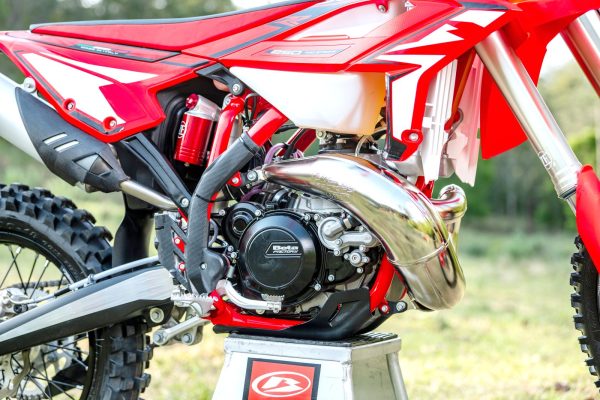
THE IRONMAN
Beta’s reputation for building durable, high-quality motorcycles is well-reflected in the RR 250. The bike’s molybdenum steel frame is both strong and lightweight. The RR 250s 1.3L of coolant worked flawlessly for our testing, even during prolonged periods of hard riding. The fuel tank, with a capacity of 9.5L and a 2.3L reserve, offers a decent range for most trail rides, though those planning longer excursions may want to consider additional fuel options.
The overall build quality is top-notch, with high-quality materials used throughout the bike. The wave discs on the brakes and the reinforced swingarm contribute to a sense of reliability and durability.
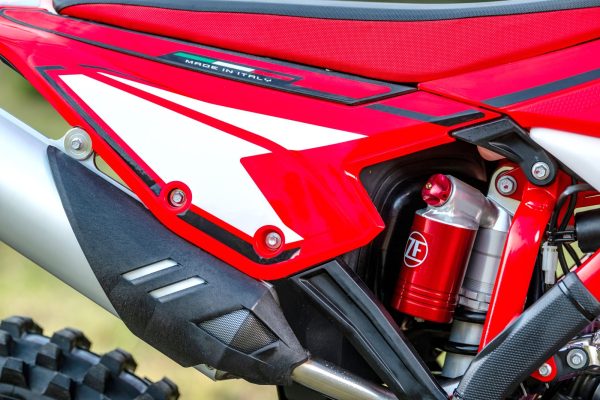
NOT ONE TO BE OVERLOOKED
The 2024 Beta RR 250 is a good option for riders looking for a balance of agility and power. It’s particularly well-suited for those who want to change gears more often and ride up in the revs, where the bike’s responsive motor and agile feel will reward you.
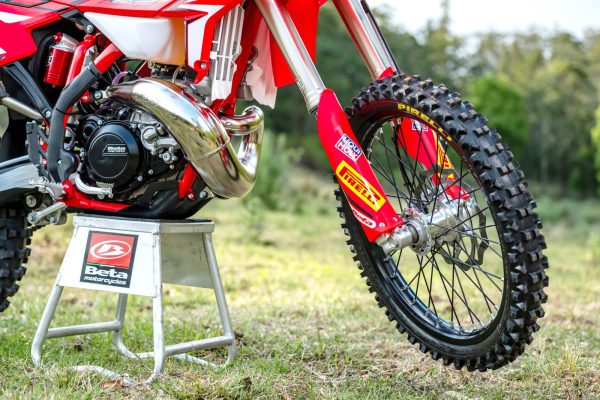
The Keihin PWK 36 carburettor is one of the best and most trusted carbs out there and delivers smooth and predictable power across the rev range.
2024 Beta RR 250
Frame Molybdenum steel with double cradle split above the exhaust post
Dimensions
Wheelbase: 1482 mm
Seat Height: 950 mm
Ground Clearance: 320 mm
Dry Weight: 103.5 kg
Fuel Tank: 9.5 litres, Reserve: 2.3 litres
Suspension
Front Suspension: ZF 48mm Hydraulic USD Fork, 295mm travel
Rear Suspension: ZF Monoshock with progressive compound lever, 290mm travel
Brakes:
Front Brake: Nissin, Wave disc 260mm
Rear Brake: Nissin, Wave disc 240mm
Wheels and Tyres:
Front Tyre: Pirelli Scorpion MidSoft, 90/90 – 21
Rear Tyre: Pirelli Scorpion MidSoft, 140/80 – 18
Engine
Type: Single cylinder, two-stroke, liquid-cooled
Displacement: 249cc
Bore & Stroke: 66.4mm x 72mm
Compression Ratio: 13.2:1
Carburettor: Keihin PWK 36
Clutch: Hydraulic, wet multi-disc
Transmission: Six gears
RRP $13,995 (Ride Away)
Browser betamotor.com.au
Warranty Six months
WORDS | MITCH LEES
PHOTOS | BUSTAPHOTO
